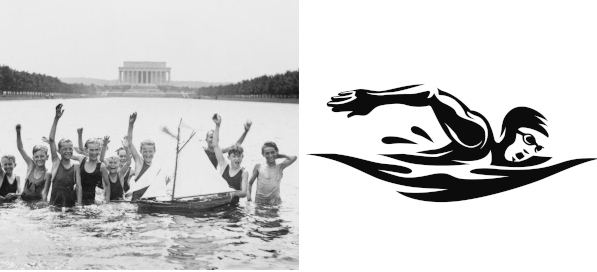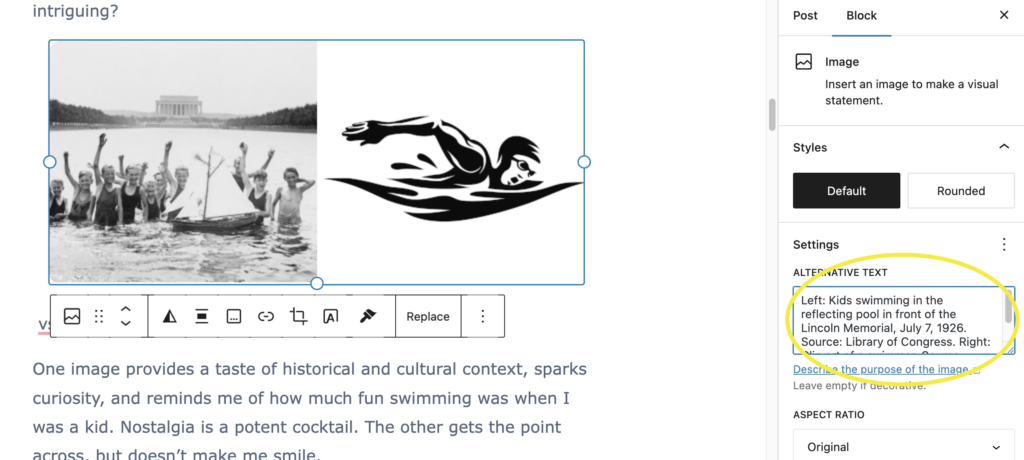How to Use Creative Commons Images for Your Podcast

Using Creative Commons images is a great option for creating visual art for your podcast. You can spend less time, save money, and provide more interesting context for your show’s content.
Visual art is crucial to gaining an audience and showing your podcast at its best. But, not everyone enjoys graphic design. Hiring an artist is always good, but can be too expensive for some folks. Yes, there are always AI image generators. However, AI images tend to be incongruous and distracting from the content they’re meant to clarify.
In this article, I’ll explain Creative Commons licenses, what these images can do for your podcast, and some simple strategies for getting the most out of them.
What Are Creative Commons Images?
Creative Commons images (or content in general) are available under a license that doesn’t require paying any money. There may be some restrictions on use, though. These kinds of public copyright licenses let a creator:
- keep the rights to their work and
- specify what can or can’t be done with their work,
- encouraging sharing, collaboration, and building on the original.
The Creative Commons site provides detailed explanations of how Creative Commons licenses work. Following those guides shows you respect other artists and puts you in good company.
Why Should I Use Creative Commons Images for My Podcast?
Firstly, they won’t cost you a penny. Secondly, finding them is faster (and, for some people, more fun) than making them. Most importantly, when you find Creative Commons images in libraries or archives, they add a layer of context to make your content more enjoyable for your audience.
For example, let’s say I have a fitness podcast and want to create a unique image for my episode about swimming. Which image is more intriguing?

One image provides a taste of historical and cultural context, sparks curiosity, and reminds me of how much fun swimming was when I was a kid. Nostalgia is a potent cocktail. The other gets the point across, but doesn’t make me smile.
So, where can you find images that pique curiosity, stir up emotions, and don’t cost any money?
Great Places to Find Creative Commons Images
Don’t simply search online for “Creative Commons images.” Many sites pull pictures from libraries and archives and make them available for a subscription fee. Sure, you may get one or two images for free, but like trying to read New York Times articles, that paywall will eventually come up. Besides, why not go straight to the source? You’ll get more information about what you’re using.
Many libraries, museums, and public archives know they risk seeming irrelevant in a digital age. So, they make some of their material available under Creative Commons licenses. In some cases, the images are in the public domain. Or, the creator gave the images to the archive under the condition that they be shared. Here are some examples.
Library of Congress’ Free to Use and Reuse Sets
When the Library of Congress has digital content that “the Library believes… is either in the public domain, has no known copyright, or has been cleared by the copyright owner for public use,” it makes the content available for download. The Library of Congress Free to Use and Reuse resource also has themed sets available, which are interesting to browse.
If you need a picture of Andy Warhol and Tennesee Williams on a boat, or a Japanese cat, the Library of Congress has you covered. Thousands of drawings, photos, posters, maps, and more are available under Creative Commons licenses. In many cases, you don’t have to credit the Library of Congress, but it would be nice if you did.
The British Library’s Collections on Flickr Commons
To increase accessibility, encourage reuse, and learn more about their collection, The British Library makes millions of public domain images available on Flickr. This vast collection goes back to the beginning of print. Painstaking pen and ink illustrations, prints, photos, maps, paintings, architectural plans, and more are available: all you have to do is download them and credit the British Library.
Wikimedia Commons
Wikimedia Commons is a collection of millions of media files, and anyone can contribute to it. The variety of Creative Commons images is breathtaking. Their monthly photo challenges ensure that the collection continues to grow while remaining diverse and relevant. You can find a photo of Hurricane Florence taken from the International Space Station or a closeup of a critically endangered Saola.
Photographers know that content creators look for images on Wikimedia Commons. So, you can find many generic images (for example, the phrase “low-carbohydrate diet” returned 36 relevant pictures of food, but 17 were photos of the same no-bake pumpkin cheesecake) as well as specific celebrity photos or images from current events. Make sure you attribute the creator of the image. Treat other artists the way you’d want to be treated.
Creative Commons Search Portal
The Creative Commons organization’s search portal helps you search fifteen different sites from one page. Type in the search terms for what you want to find, then click the name of the database and click search. Each database has its own indexing and quality control system, so the word “mermaid” could find anything from a polished illustration from the 1700s to photos from an elementary school play. This portal takes a bit more patience, but you may strike gold.
Best Practices for Using Creative Commons Images
Before you use Creative Commons images, take note of the license agreement. Some require attribution, meaning you have to credit the artist. Others allow or prevent adapting the image, and some can’t be used for commercial purposes.
Resize the image so it fits properly. For example, if you’re using a Creative Commons image as podcast episode art, take a moment to crop and resize the image so that it’s less than 3000 pixels square.
Credit the resource where you got the image and the artist if they’re known. You can put this in an image caption, in your show notes, or in an alt tag. Information in the image’s alt tag or description helps your SEO, too.

In the above screenshot, you can see that WordPress provides a block for me to type in image descriptions and credits. Some social media platforms provide this option, so creators can enter text for people who use screen readers. You can also put the image credits in your show notes.
Creative Commons Images Help Your Podcast Improve the Internet
Creative Commons images don’t cost money, take little time to find and use, and add a layer of context to your content that can make it more compelling for an audience. But there’s a right way and a wrong way to use them. Follow the license instructions, give credit where appropriate, and treat other artists how you’d want to be treated.
When the Internet was in its infancy, a “rising-tide-raises-all-boats” attitude encouraged information sharing. Creative Commons licenses show that. Information deserves to be free, and Creative Commons images can help your podcast grow.
Speaking of growth, why not check out our Growth Essentials course? It has all the info you need around building an audience, packed full of tips, techniques, and strategies to keep those listen numbers growing.
